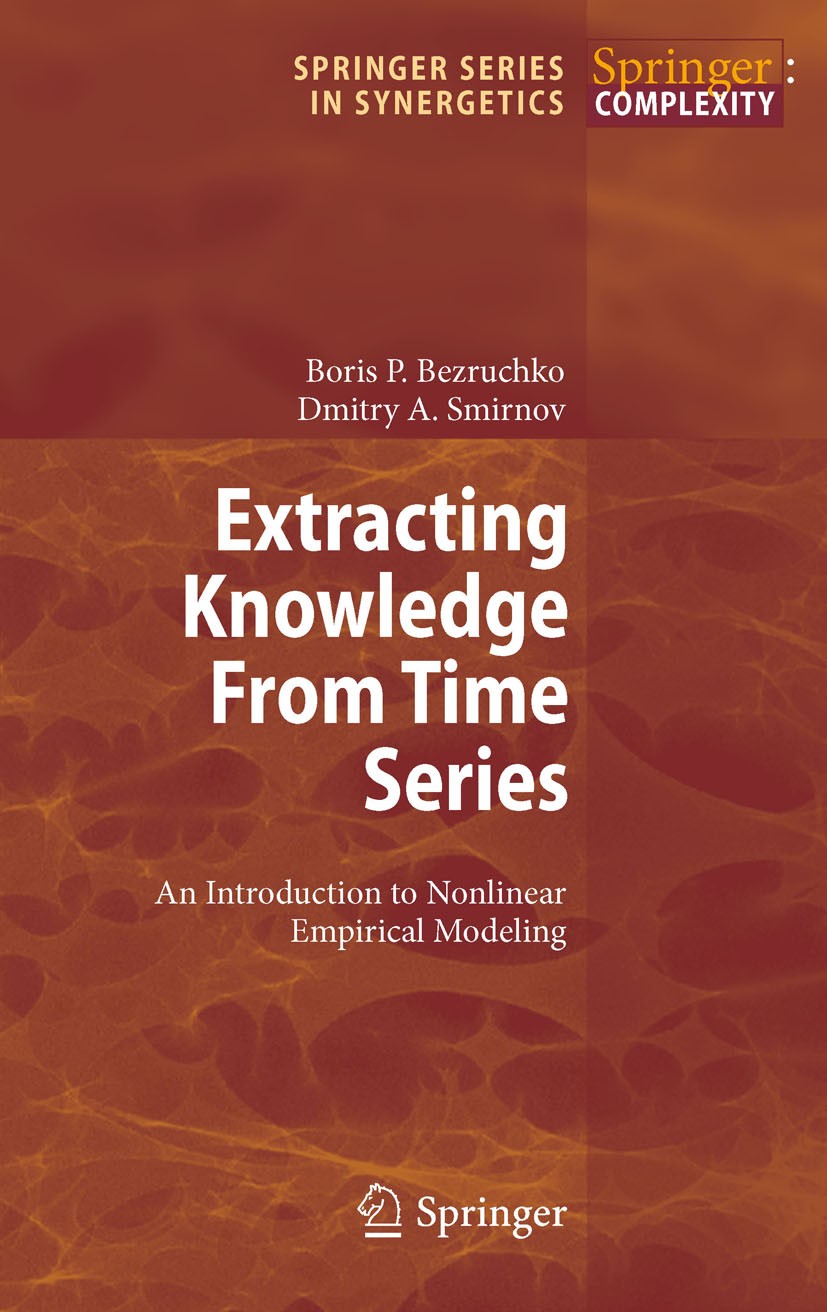| 書目名稱 | Extracting Knowledge From Time Series |
| 副標題 | An Introduction to N |
| 編輯 | Boris P. Bezruchko,Dmitry A. Smirnov |
| 視頻video | http://file.papertrans.cn/320/319956/319956.mp4 |
| 概述 | Useful as a self-study guide.Gives a modern approach and practical examples.Written by well known authors having made many contribution to the field.Includes supplementary material: |
| 叢書名稱 | Springer Series in Synergetics |
| 圖書封面 |  |
| 描述 | Mathematical modelling is ubiquitous. Almost every book in exact science touches on mathematical models of a certain class of phenomena, on more or less speci?c approaches to construction and investigation of models, on their applications, etc. As many textbooks with similar titles, Part I of our book is devoted to general qu- tions of modelling. Part II re?ects our professional interests as physicists who spent much time to investigations in the ?eld of non-linear dynamics and mathematical modelling from discrete sequences of experimental measurements (time series). The latter direction of research is known for a long time as “system identi?cation” in the framework of mathematical statistics and automatic control theory. It has its roots in the problem of approximating experimental data points on a plane with a smooth curve. Currently, researchers aim at the description of complex behaviour (irregular, chaotic, non-stationary and noise-corrupted signals which are typical of real-world objects and phenomena) with relatively simple non-linear differential or difference model equations rather than with cumbersome explicit functions of time. In the second half of the twentieth century |
| 出版日期 | Book 2010 |
| 關鍵詞 | Stochastic model; Stochastic models; chaotic signals; model equations; modeling; modeling and forecast; no |
| 版次 | 1 |
| doi | https://doi.org/10.1007/978-3-642-12601-7 |
| isbn_softcover | 978-3-642-26482-5 |
| isbn_ebook | 978-3-642-12601-7Series ISSN 0172-7389 Series E-ISSN 2198-333X |
| issn_series | 0172-7389 |
| copyright | Springer-Verlag Berlin Heidelberg 2010 |
 |Archiver|手機版|小黑屋|
派博傳思國際
( 京公網(wǎng)安備110108008328)
GMT+8, 2025-10-24 14:54
|Archiver|手機版|小黑屋|
派博傳思國際
( 京公網(wǎng)安備110108008328)
GMT+8, 2025-10-24 14:54


